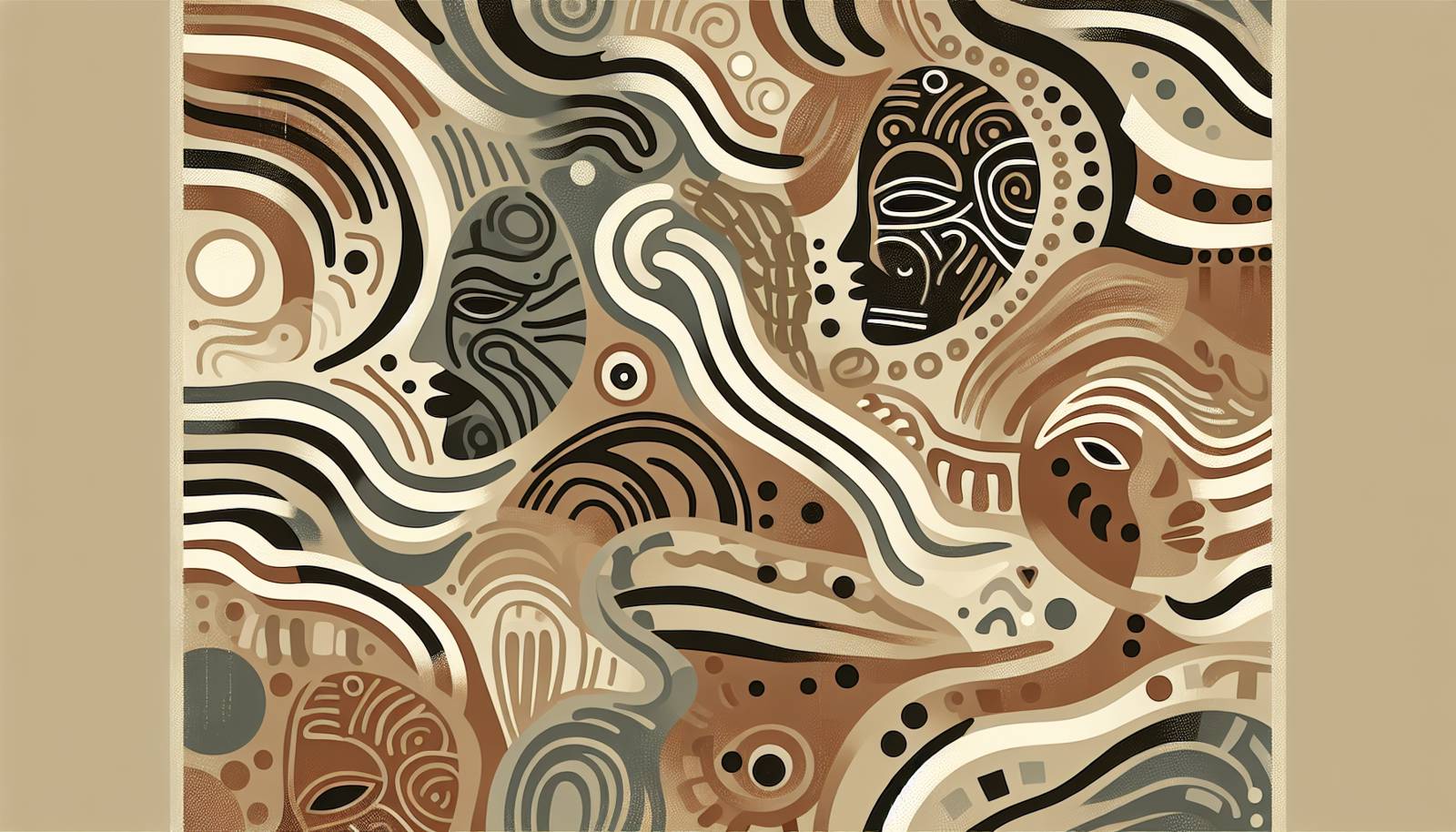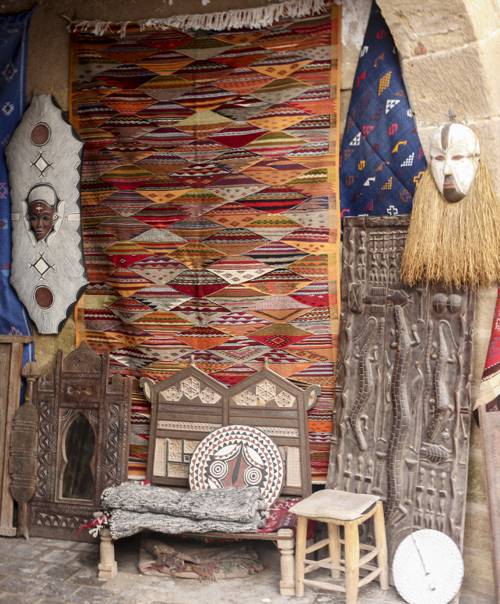
FAQ About The Influence of Traditional African Masks in Modern Art

What are traditional African masks?
Traditional African masks are cultural artifacts made by various ethnic groups across the African continent. These masks are primarily used in rituals, ceremonies, and cultural performances. They are often crafted from materials like wood, metal, fabric, and beads and are characterized by their distinctive designs and symbolic meanings that reflect the beliefs, history, and customs of the communities that create them.

How have traditional African masks influenced modern art?
Traditional African masks have significantly influenced modern art by inspiring artists with their bold forms, abstract designs, and symbolic depth. Artists such as Pablo Picasso, André Derain, and Henri Matisse were drawn to the innovative use of shapes and the emotional intensity of African masks, which helped to inspire movements like Cubism and Fauvism. These movements, in turn, have shaped broader artistic developments across the 20th and 21st centuries.

Which famous artists have been inspired by African masks?
Several renowned artists have been inspired by African masks, including Pablo Picasso, whose exposure to African art profoundly influenced his development of Cubism. Henri Matisse and the Fauves, as well as artists of the German Expressionism movement, also drew inspiration from the forms and styles of traditional African masks.

What is the role of symbolism in African masks?
Symbolism plays a crucial role in African masks, with each mask often representing specific spiritual, moral, or social themes. The features of the masks, such as colors, shapes, and patterns, are carefully chosen to convey messages or tell stories related to the cultural beliefs and values of the community. They may represent deities, ancestors, or mythological spirits and are often used in rituals to communicate with the spiritual world.

Can you give examples of African masks influencing modern artistic movements other than Cubism?
Beyond Cubism, traditional African masks have influenced other modern artistic movements such as Fauvism, German Expressionism, and Surrealism. The vivid colors, bold shapes, and emotive expressions found in African masks resonated with Fauvist artists like Henri Matisse, while the emotive potential of these masks inspired the expressive style of German Expressionists such as Ernst Ludwig Kirchner.

How did Picasso incorporate African masks into his art?
Pablo Picasso incorporated the aesthetic elements of African masks into his art by adopting their abstract and fragmented forms. This influence is most prominently seen in his seminal work Les Demoiselles d'Avignon, where he uses mask-like faces to portray a sense of otherworldliness and emotional depth, which became defining characteristics of Cubism.

What are some key characteristics of African masks that appeal to modern artists?
The key characteristics of African masks that appeal to modern artists include their abstraction, symbolic meanings, geometric forms, and emotional expressiveness. These features offer a break from the realism and traditional arts of the Western world, providing a fresh perspective and a new means of expression that many modern artists found liberating and inspiring.

In what ways do contemporary African artists incorporate traditional masks into their work?
Contemporary African artists often incorporate traditional masks by reinterpreting their forms and symbols in new contexts and media. Artists might integrate mask motifs into paintings, sculptures, and installations, using them to explore themes of identity, heritage, and cultural continuity. This allows for a dialogue between historical and modern narratives, providing a rich cross-cultural commentary.

Why are African masks considered a form of functional art?
African masks are considered a form of functional art because they serve not only as aesthetic objects but also as vital components of cultural rituals and performances. They are used in ceremonies to convey religious and spiritual meanings, to celebrate harvests, or to enact social functions such as initiation rites and funerals. Therefore, their value is deeply embedded in their utility within cultural practices.

How do museums typically display African masks to highlight their influence on modern art?
Museums often display African masks alongside modern artworks to highlight their influence, providing visitors with a visual narrative of the impact these masks have had on various art movements. Curatorial techniques may include thematic exhibitions, juxtaposition of traditional masks with contemporary pieces, and multimedia installations that explore the cross-cultural dialogue between African artistic traditions and modern art.

What are some misconceptions about African masks in modern art?
A common misconception about African masks in modern art is that they were merely aesthetic objects, devoid of deeper context. Some people mistakenly believe that their influence is limited to their visual impact on Western artists. In reality, African masks have profound cultural significance and convey deep symbolic meanings; understanding these contexts enriches their appreciation in modern art.

How has the portrayal of African masks in Western art historically changed over time?
The portrayal of African masks in Western art has evolved from being seen purely as exotic artifacts or curiosities to being acknowledged as sophisticated expressions of cultural and artistic sophistication. Over time, as understanding and appreciation have grown, African masks have been recognized for their profound influence on modern art movements and are appreciated within the broader context of global art history.

What ethical considerations are involved in the use of African masks in modern art?
The use of African masks in modern art involves ethical considerations such as cultural appropriation and the respectful representation of cultural artifacts. It is crucial for artists and institutions to engage with these masks with an understanding of their cultural meanings and histories, ensuring that contemporary use does not trivialize or undermine the traditions they originate from.

How have African masks influenced the development of abstract art?
African masks have influenced the development of abstract art by introducing artists to different ways of seeing and representing reality. The innovative use of shapes, forms, and colors inherent in masks provided a departure from Western concepts of realism, leading artists to experiment with abstraction in search of conveying deeper emotions and concepts.

Are there any specific types of African masks that are more influential in art?
Certain types of African masks, such as those from the Dogon, Baule, and Fang peoples, are particularly influential due to their striking designs and symbolic richness. Masks like the Kwele masks, known for their heart-shaped faces and serene expressions, have inspired many artists with their understated elegance and emotional resonance.

What contemporary art pieces are directly inspired by African masks?
Numerous contemporary art pieces draw inspiration from African masks, ranging from sculpture and installation art to mixed media and digital works. Artists like Jean-Michel Basquiat and Kehinde Wiley incorporate elements reminiscent of African masks in their vivid compositions, exploring complex themes of identity, heritage, and cultural dialogue.

In what other areas, besides visual arts, have African masks exerted influence?
African masks have exerted influence in various areas beyond visual arts, including theater, fashion, and film. In theater, they have informed stage design and character costumes by offering a rich source of visual symbolism. In fashion, designers draw inspiration from mask patterns and motifs to create textiles and prints. Additionally, films have incorporated mask imagery to build narratives that explore African culture and folklore.

What are the rituals associated with African masks?
African masks are associated with a wide array of rituals, including traditional ceremonies like initiation rites, harvest festivals, and spiritual or religious ceremonies. In many cultures, masks are used in dance performances to invoke spirits or ancestors and communicate with the divine world, serving as mediators between the human and spiritual realms.

How does the environmental context influence the materials used in African masks?
The environmental context significantly influences the materials used in African masks, as artisans utilize locally available resources. For instance, in forested regions, wood is the primary material due to its abundance, while in arid and desert areas, masks might be made from leather, metal, or woven fibers. This diversity reflects the adaptability and creativity of African artisans.

What role do African artisans play in preserving the tradition of mask-making?
African artisans play a crucial role in preserving the tradition of mask-making by transmitting their skills and knowledge through generations. They often use traditional techniques and materials, ensuring continuity and maintaining the cultural significance of the masks. Many artisans are also involved in modern reinterpretations of mask-making, blending historical practices with contemporary artistic expressions.
